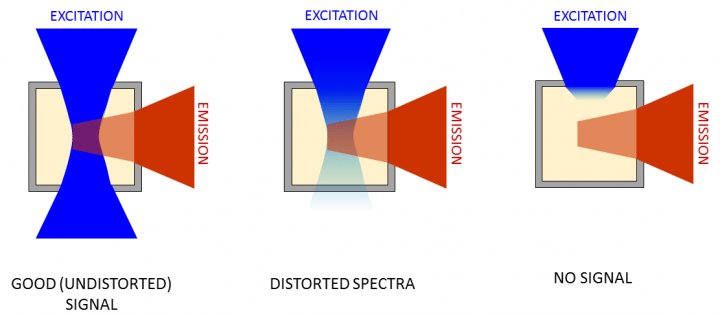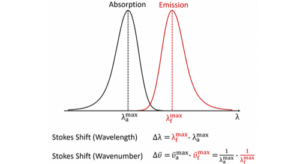The inner filter effect is a common problem in fluorescence spectroscopy, affecting spectral measurements in particular. In highly concentrated solutions the excitation beam is attenuated by the sample so that only the surface facing the excitation beam fluoresces strongly. The centre of the cuvette, which is imaged by the emission monochromator in the fluorescence spectrometer, has lower fluorescence emission which affects the signal detected.
The attenuation of the excitation beam described above, is known as primary inner filter effect. In addition, if the excitation and emission spectra overlap significantly, the light emitted in the centre can be reabsorbed by the sample itself. This is known as secondary inner filter effect.
The inner filter effect results in spectral distortion and in some cases complete loss of signal, so users must learn to identify and prevent this effect. It is good practice to measure fluorescence spectra at different sample concentrations: a linear dependence of fluorescence on concentration indicates that this effect is not present.
The best approach to avoid the inner filter effect is to reduce the concentration of the sample. Ideally, the absorption spectrum should be acquired prior to measurement. As a rule of thumb, an optical density of < 0.1 at the excitation wavelength produces good results. If that is not sufficient, the following can be attempted:
Fluorescence Spectrometers by Edinburgh Instruments can accommodate cuvettes of different sizes and front-face configuration, as well as absorbance detectors to check the optical density of your sample.

